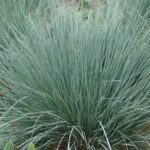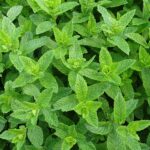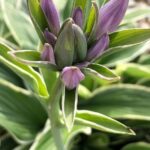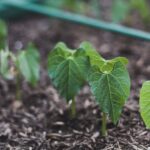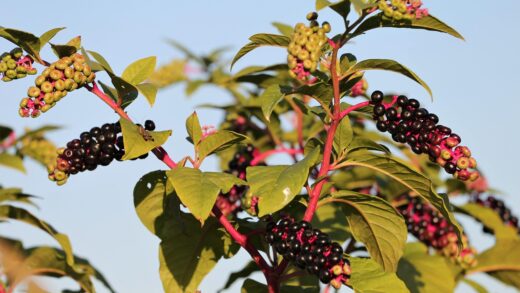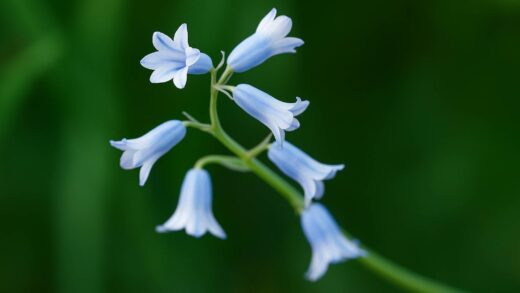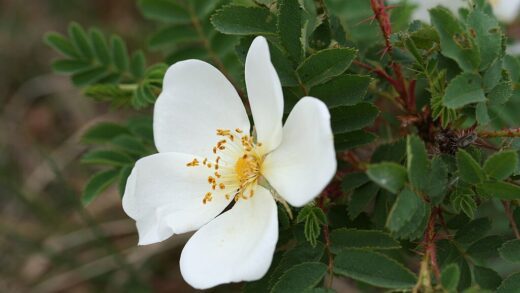Planting a new aloe vera or propagating it from an existing one is a straightforward process that allows you to easily expand your collection or share this wonderful succulent with others. The key to success lies in understanding the plant’s fundamental needs, particularly its requirement for excellent drainage and its vulnerability to rot. When planting, the goal is to create a stable and healthy environment that encourages strong root development from the outset. This involves selecting the right container, preparing the ideal soil mix, and positioning the plant correctly to ensure its long-term viability and growth.
The process begins long before the plant is actually placed in the soil. Careful consideration must be given to the choice of pot, as this vessel will be the plant’s home. The material, size, and drainage capabilities of the container are all critical factors that directly impact root health. Similarly, the growing medium must be specifically tailored to the needs of a succulent, providing the aeration and rapid drainage that mimic its natural arid habitat. Standard garden soil is simply not suitable for this task.
Propagation, the process of creating new plants, is most commonly done using the small offshoots, or “pups,” that a mature mother plant produces. This method is highly effective and yields new plants that are genetically identical to the parent. The separation and planting of these pups require a gentle touch and a bit of patience, particularly during the crucial curing stage, which prepares the new plantlet for a successful life on its own.
By following a few fundamental principles, you can ensure a high success rate for both planting and propagation. This guide will walk you through each step in detail, from preparing the ideal home for your aloe to carefully separating and nurturing its offspring. Mastering these techniques will empower you to cultivate a thriving family of aloe vera plants from a single parent.
Selecting the right pot and soil
The first and most critical step in successfully planting aloe vera is choosing the right container. The pot must have excellent drainage, which means a large drainage hole at the bottom is an absolute necessity. Without it, water will accumulate, leading to the suffocation and decay of the root system. Material choice is also important; terracotta or unglazed ceramic pots are superior choices because their porous nature allows soil to dry out faster, providing an extra safeguard against overwatering.
More articles on this topic
When it comes to size, select a pot that is proportional to the plant’s root ball, not just its leaves. The container should be wide rather than deep, as aloe vera has a shallow, spreading root system. A pot that is too large will hold an excessive volume of soil that stays wet for too long, increasing the risk of root rot. A good rule of thumb is to choose a pot where the diameter is roughly equal to one-third to one-half the height of the plant’s foliage.
The soil, or growing medium, is just as crucial as the pot. Aloe vera demands a gritty, well-draining soil mix that does not retain excessive moisture. You can purchase pre-made cactus or succulent soil, which is specifically formulated for these types of plants. This is the easiest and most reliable option for beginners, as it takes the guesswork out of creating the right balance of ingredients. These mixes typically contain a blend of organic matter with drainage-enhancing materials like perlite, pumice, or coarse sand.
Alternatively, you can create your own custom soil blend to ensure optimal conditions. A popular and effective recipe is to combine one part standard potting soil, one part coarse horticultural sand, and one part perlite or pumice. This mixture provides minimal water retention while allowing for excellent airflow to the roots. Avoid using fine sand or soil from your garden, as these can compact easily and impede drainage, creating the very conditions you need to avoid.
The planting process
Once you have your pot and soil ready, you can begin the planting process. Start by placing a piece of mesh screen or a coffee filter over the drainage hole of the pot. This will prevent the soil from washing out during watering while still allowing excess water to escape freely. You can also add a thin layer of small gravel at the bottom, although this is not strictly necessary if you have a well-draining soil mix and a proper drainage hole.
More articles on this topic
Next, fill the pot about one-third of the way with your prepared succulent soil mix. Carefully remove the aloe vera plant from its current container, gently teasing the roots apart if they are tightly bound. Inspect the root ball for any signs of rot—healthy roots should be firm and whitish or yellowish, while rotten roots will be black, mushy, and may have a foul odor. If you find any rotten sections, trim them off with a clean, sharp pair of scissors or a knife.
Position the plant in the center of the new pot, holding it so that the base of the plant sits slightly above the rim of the pot. Begin backfilling with your soil mix, adding it around the root ball until the pot is filled. The final soil level should be a few centimeters below the rim to allow space for watering. Gently tamp down the soil to remove any large air pockets and to secure the plant, but avoid compacting it too tightly, which would defeat the purpose of using a well-aerated mix.
A crucial final step that is often overlooked is to delay watering immediately after planting. It is best to wait at least a week before giving the plant its first drink. This waiting period allows any roots that may have been bruised or broken during the repotting process to heal and callus over. Watering immediately can introduce bacteria to these wounds and significantly increase the risk of root rot before the plant has even had a chance to establish itself.
Propagation from offsets
The most common and reliable method of propagating aloe vera is through its offsets, more affectionately known as “pups.” These are the small, new plants that sprout from the base of the mature mother plant, connected by a root. Propagating from pups is ideal because they are already complete, miniature plants with their own root systems, which gives them a very high chance of survival. Wait until a pup is a reasonable size, ideally at least a few inches tall with several of its own leaves, before attempting to separate it.
To begin the separation, you will need to carefully remove the entire mother plant from its pot. This allows you to get a clear view of the root system and the connection points between the parent and its pups. Gently brush away the soil to expose the roots and locate the point where the pup is attached to the main plant. Your goal is to separate the pup with as much of its own root system intact as possible.
Using a clean, sharp knife or a pair of pruners, make a clean cut to sever the connection between the mother plant and the pup. If the pup already has a well-developed, independent root system, you may be able to gently untangle and pull it away without needing to make a cut. Try to be as gentle as possible to minimize damage to both the parent and the offspring during this surgical procedure.
Once the pup is free, you can repot the mother plant back into its original container or a new one if it needs upsizing. The separated pup should now be treated as its own individual plant. Inspect its base and roots; it is now ready for the crucial next step of curing before it can be planted in its own pot. This simple process can quickly turn one plant into many.
Curing and rooting offsets
After you have successfully separated an aloe pup from its mother, it is vital to resist the urge to plant it immediately. The fresh cut where it was detached is a wound, and like any wound, it needs time to heal. This healing process is known as curing or callusing, and it involves leaving the pup in a dry, shaded place for several days, typically anywhere from two to seven days depending on the size of the cut and the humidity of the environment.
The purpose of curing is to allow the cut surface to dry out and form a protective callus. This hardened layer acts as a barrier, preventing soil-borne pathogens and fungi from entering the plant when it is finally potted. Planting a pup with a fresh, open wound directly into moist soil is a common mistake that almost guarantees it will succumb to rot. You will know the pup is ready for planting when the cut surface feels dry and firm to the touch.
Once the pup has formed a proper callus, it is ready to be planted. Choose a small pot with a drainage hole that is just large enough to comfortably accommodate the pup’s root system. Fill the pot with the same well-draining cactus or succulent mix that you would use for a mature plant. Make a small indentation in the center of the soil and place the base of the pup into it, firming the soil around it just enough to hold it upright.
Just as with repotting a mature plant, do not water the newly planted pup right away. Wait for at least a week before giving it a light watering. This encourages the new roots to grow in search of water and further reduces the risk of rot. Place the potted pup in a location that receives bright, indirect light, and water it sparingly until you see signs of new growth, which indicates that the plant has successfully established its root system.
Propagation from leaf cuttings
While propagation from offsets is the most common method, it is also possible, though more challenging, to propagate aloe vera from a single leaf cutting. This method has a lower success rate because aloe leaves have a very high water content, which makes them prone to rotting before they can develop roots. However, if you do not have any pups available, it is a technique worth attempting with the right approach.
To start, select a healthy, mature leaf from the base of the plant. A leaf that is at least ten centimeters long is ideal. Using a clean, sharp knife, make a clean cut at the very base of the leaf, where it connects to the main stem of the plant. It is important to get a piece of the stem tissue with the leaf, as this area contains the cells necessary for new growth. A leaf simply broken off mid-way is unlikely to ever root.
Similar to propagating pups, the leaf cutting must be allowed to cure. Place the leaf in a warm, dry location away from direct sunlight for several days, or even up to a week, until the cut end forms a dry, hard callus. This step is absolutely critical to prevent the leaf from rotting when it is placed in soil. Do not skip this drying period, as it is the most important factor in determining the success of this method.
Once the callus has formed, you can plant the leaf cutting. Dip the callused end in rooting hormone to increase the chances of root development, although this is optional. Plant the leaf cutting callused-end down, inserting about a third of its length into a pot filled with a well-draining succulent mix. Do not water it for the first week, and then only water very sparingly. With patience and a bit of luck, the leaf cutting may develop roots and eventually produce tiny new plantlets at its base over the course of several weeks or even months.









